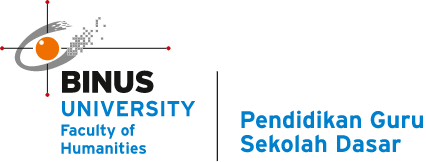Unveiling the Magic of AI: An In-depth Analysis of ChatGPT
Artificial Intelligence (AI) and Machine Learning (ML) are the modern age’s most fascinating and impactful fields, leading us towards what feels like an inevitable tech-driven future. A shining star in these fields is OpenAI’s language model, ChatGPT. Let’s journey through its mechanisms, applications, challenges, and future possibilities.
Introduction
To understand the vast landscape of AI, we first need to comprehend its simplest form – a system that mimics cognitive functions that humans associate with the human mind, such as learning and problem-solving.
ChatGPT: Architecture and Mechanisms
ChatGPT, a conversational variant of GPT (Generative Pretrained Transformer), is a marvel of AI with its ability to generate human-like text responses. But how does it work? It all starts with the transformer architecture.
Transformers and GPT
Transformers are a class of models that revolutionized the field of Natural Language Processing (NLP). They harness a mechanism called “Attention” which allows the model to weigh the relevance of different words in an input sequence. This means, when processing a sentence, every word considers the ‘context’ provided by every other word.
Building on this architecture, OpenAI created GPT, a language model that uses transformers and unsupervised learning. GPT is ‘pretrained’ on a large corpus of text data, learning to predict the next word in a sentence.
From GPT to ChatGPT
ChatGPT extends this principle to interactive conversations. By training on numerous dialogues, it learns not only to predict the next word but the next user utterance.
But how exactly does ChatGPT ‘learn’?
Training and Learning Process
ChatGPT’s learning process involves two main steps:
- Pre-training: This stage is about learning from the data – billions of sentences and phrases – and understanding language patterns, syntax, and semantics. It’s like how a child learns a language, absorbing information from their environment.
- Fine-tuning: Once the model has a baseline understanding of language, it’s then fine-tuned on a more specific dataset, often involving human reviewers following guidelines provided by OpenAI. This process helps to customize the model for specific tasks or to imbue it with a certain ‘personality’.
Real-World Applications
From drafting emails to writing code, tutoring, language translation, and beyond, ChatGPT finds its applications in various fields. For more insight, I turned to an industry pioneer, Sam Altman.
Interview with Sam Altman
Altman, the CEO of OpenAI, enthusiastically explained, “ChatGPT, apart from its extensive use in customer support and content generation, can assist individuals with learning disabilities or help non-native speakers improve their language skills. It can even act as a companion for the elderly. The applications are endless.”
Limitations and Challenges
Despite its capabilities, ChatGPT is not without limitations. It can sometimes produce incorrect or nonsensical responses. Its lack of an internal ‘model’ of the world also limits its ability to provide accurate, fact-based responses.
Altman elaborated, “It’s important to understand that ChatGPT doesn’t ‘know’ anything. It doesn’t have beliefs or desires. It’s just predicting the next word based on its training.”
Ethical Considerations
AI, particularly a powerful language model like ChatGPT, brings about a host of ethical considerations. Concerns range from its potential misuse in spreading misinformation, the privacy of training data, to more philosophical concerns about AI autonomy.
OpenAI maintains stringent guidelines for human reviewers during the fine-tuning process to address these concerns, but the conversation about AI ethics is ongoing and complex.
AI in Communication
As we become more intertwined with AI, it’s hard not to ponder the role of AI in our communication. Language models like ChatGPT could redefine the way we interact with technology, turning our devices into responsive, conversational partners.
The Future of AI
The advancements in AI and ML are growing at an exponential pace, offering glimpses into a future where AI becomes an integral part of our daily lives. How we navigate this future is a conversation that involves not just technologists, but also ethicists, policy-makers, and society at large.
AI has the potential to bring about enormous societal changes. It could revolutionize industries, change the nature of work, and impact social dynamics. As we advance, it is essential to consider how we can guide these changes in a way that is beneficial for all of humanity.
In conclusion, while ChatGPT and similar AI models are powerful tools with immense potential, their use comes with significant responsibilities. Understanding them, their capabilities, and their limitations will be key to unlocking their potential while safeguarding our future.


